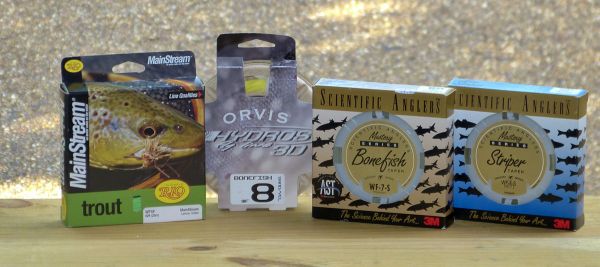
Questions, you have? Answer them, we must!
When I read that a new episode in the Star Wars saga is coming out in December, I was as thrilled as a wookie getting a flea collar.
The seventh film of the sci-fi series — titled Star Wars: The Force Awakens — takes place almost 30 years after Luke Skywalker, Hans Solo, Yoda and other freedom fighters managed to bring down Emperor Palpatine, the Death Star and the Empire as a whole.
The movie will feature some of the original cast, albeit quite a bit older.
Thirty years. Seems it’s been that long since we had the “Fly-Fishing Answer Man” in this column.
The good news is that the Answer Man is back, encouraging fellow Jedi Flycasters in combatting the Dark Side of the Fishing Force.
I might not be as wise as Master Yoda — or as good-looking — but, as he would say: “Answer these questions, I must!”
Q. I’m a bit confused about leaders and tippets. I understand that a piece of monofilament connects fly line to fly, but what’s all the sections for? And what would you recommend for redfish and speckled trout? J.S., Laplace
A. The leader connects fly line to fly, and can be mono or fluorocarbon or both. The butt is the section of leader that connects to the fly line, the tippet is what connects to the fly. Between the butt and tippet are one or more pieces called the midsection.
The butt is thicker than the midsection, which is thicker than the tippet. This forms a tapered leader that is more efficient in turning a fly over.
Leaders can vary depending on length, number of sections, butt diameter, tippet strength in pounds, type of material used and types of knots used. As a result, there are almost as many leader combinations as there are 2016 GOP presidential candidates.
The simple solution is to buy a continuous, tapered leader. If you want to make your own and keep it simple, a two-section leader — just butt and tippet — works perfectly well.
My favorite is the Ritz formula — 60 percent butt, 20 percent midsection, 20 percent tippet.
For example, a 9-foot leader might be 5 feet of 24-pound mono (butt), 2 feet of 16-pound mono (midsection), and 2 feet of 12-pound tippet (mono for poppers or fluoro for sinking flies).
Q. I’m looking for flies tied in America. Is there such a thing? L.C., Lacombe
A. Absolutely. If you’re looking for bass, bream, crappie and saltwater flies that are proven in Louisiana waters, check with Uptown Angler in New Orleans, Pack and Paddle in Lafayette, Gray Wolf in Shreveport and Green Trout in Baton Rouge. They all carry flies tied by local and regional tiers.
If you’re looking for coldwater patterns tied in the United States, search online for Dettes, Ken’s Custom Flies, Dry Fly Innovations, Sparks Fly Company and Grouse Creek.
Q. I’m curious as a cat — why do you prefer using a double uni-knot over either a surgeons knot or blood knot? W.T., Alexandria
A. You do realize that curiosity killed the cat, and it had nine lives? However, your question is a good one.
The blood knot has been the standard for connecting leader sections for trout fishing. It has a very small size that maintains the consistency of the leader.
However, if there’s a large difference in two sections or if tying two different materials together (like mono and fluoro), the blood knot isn’t as strong as the double uni-knot.
There is a variation called the improved blood knot that is better than the original.
Still, I prefer the uni-knot because it’s uni-versal. You can use it for just about every connection on your fly rig.
Q. I went over to (we’ll leave the name out) for a fly line, and they suggested a bonefish taper. I told them I’d be using it for redfish, not bonefish. They said it was OK. I’m confused. I.C, Cecilia
A. You’re not alone. Many newbies to our sport are taught there are four basic types of fly line tapers: level (L), weight-forward (WF), double (DT) and triangle (TT).
The species-specific lines are nothing more than variations of the weight-forward line.
A weight-forward line consists of a thin-diameter tip, an increasing-diameter front taper, an even-diameter belly section and a decreasing-diameter rear taper.
By adjusting the lengths of each section, you have countless variations.
For example, a bonefish line and a tarpon line are both made for saltwater. Both have stiff outer coatings and monofilament cores for use in hot weather.
However, the bonefish line has a longer front taper and longer belly than the tarpon line.
They do make a redfish taper line. If it’s redfish, bonefish or general saltwater, it’ll do just fine for marsh fishing.
Got questions to life’s difficult problems? If they involve fly fishing, send them to catch@laflyfish.com.


